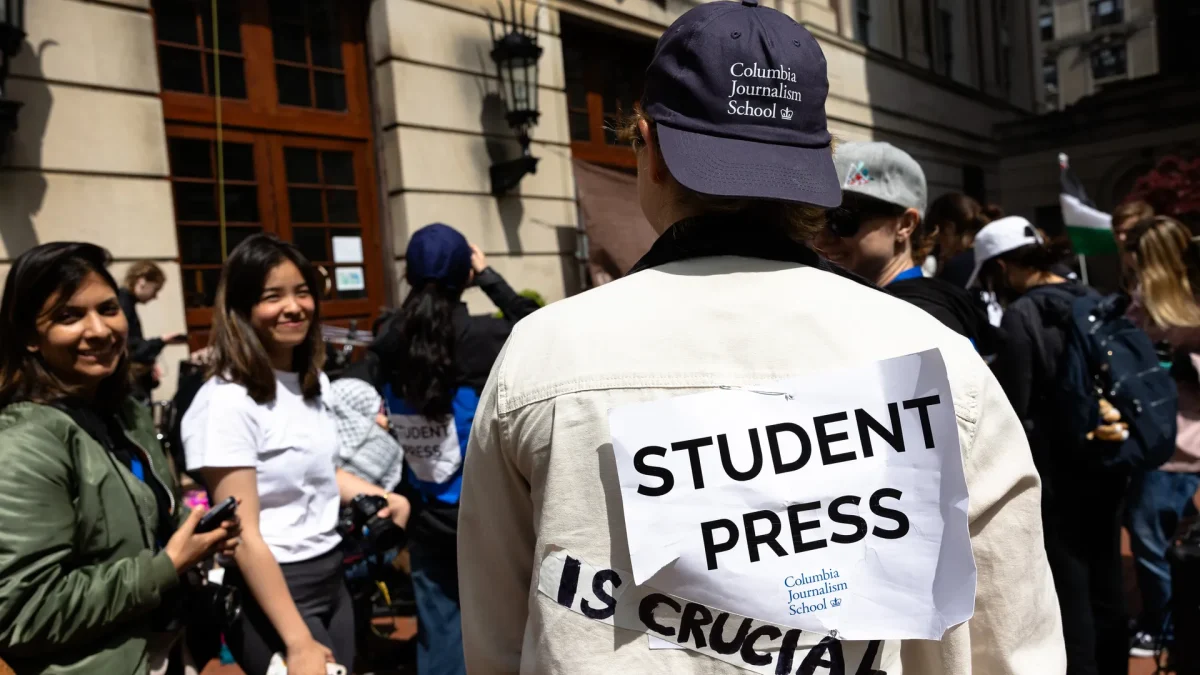Therapy dog brought to South raises students’ spirits

Jimmy the therapy dog greeting students during lunch. Debbie Orenstin, a volunteer at North Star Therapy animals and Jimmy’s mother notes, “if kids are looking for a fun and bonding experience to do with their own pets they should look into therapy dog training and volunteer work with other animals… it’s fun for the animals, it’s fun for the kids, and you’re doing something great for the community.”
February 6, 2023
South High’s recent most notable visitor comes in the form of four fluffy paws and two floppy ears– Jimmy the therapy dog. Jimmy was requested to visit South for a day to help ease the tensions of the “teenage hellscape” that is highschool.
Highschool can be tough. For some, high school can feel like a dull, uninspiring, soul-crushing institution amplifying our own personal problems to almost hopeless levels. But when new furry friends are introduced, it can raise spirits. Even the widespread, communal captivation/intrigue is enough for students to forget about the influence of a high stress environment.
Jimmy is a two and a half year old collie with a therapy certification and love for kids. Jimmy was a pandemic puppy, with an interesting upbringing as a therapy dog. Debbie Orenstin, a volunteer at North Star Therapy animals and Jimmy’s mother, got him during the middle of the pandemic when there wasn’t much training for therapy dogs at the time. Orenstin had already owned a therapy dog, named Louie, before she adopted Jimmy. She got Louie so that kids could read to him, and while Jimmy enjoys kids, he doesn’t necessarily enjoy the reading part. Orenstin is searching for more hobbies and activities for Jimmy to do, as he’s still learning and exploring his interests.
Orenstin found a woman at North Star to do private lessons with Jimmy to understand his temperament and practice desensitization. Orenstin would then take these methods and practice with Jimmy at home. “I couldn’t do the normal socialization things that you would ordinarily do with [a therapy dog]” says Orenstin, “I wasn’t going into stores and I wasn’t going to places with large crowds.” Orenstin mentions that even when Jimmy was able to do regular training classes, he often became bored of the repetition. But since that’s the whole point of the classes, he wasn’t exactly a stellar student. “We wound up working on our own.” She mentions how the same trainer gave her some hints for working with Jimmy, and eventually he passed the test that qualified him as a therapy dog.
Orenstin discusses some of the tasks Jimmy does as a therapy dog, such as listening to kids read, playing a toy piano, and simply just engaging with groups of people. “You know, people enjoy seeing him but the dog has to enjoy it too,” she mentions how different dogs will respond to people and situations in different ways, depending on their temperament and personality. “He seems to really engage with kids who have special needs.”
Jimmy visited South last Wednesday with help from the student council. “It was just something that someone said in a student council meeting as a brainstorm,” said Madeline Koebrick, a Junior at South. “We were like therapy animals? No one ever does that.” Koebrick described how she emailed North Star a request for a therapy animal, and Orenstin was the one who replied. After settling on a time and date, Jimmy’s therapeutic debut at South finally came to fruition.
Koebrick also talked about how efforts like this bring together the South community, and place smiles on the students’ faces. “I don’t know how much therapy Jimmy is doing, but I do not doubt that this is making people’s days better.” Koebrick feels that over the past few years, the student council has not been able to provide many entertaining events for students at South, especially with the pandemic. “I think that just having fun little things day to day that people can do at South is very important.” Student council is currently organizing more community-based events and activities that students can participate in for the coming months.
In the end, students want to feel calm and safe South. People want a sense of belonging in their community. With help from student-led organizations like student council, community inclusion and welfare is possible. High school doesn’t have to be just cranky teachers and confusing homework, it can be an outlet of community for dogs and people alike.







![A power outage on Friday May 12 before the start of the school day led many students to leave the building and miss parts of first, second and third hour. “[Staff at the front door] said the power might be on at 11, so [we should] come back to school at 11,” recalled freshman Riley Olson. “A lot of people went back home.” However, Principal Afolabi Runsewe claimed and maintains that students were told to stay in the commons and were never given the option to leave school.](https://www.shsoutherner.net/wp-content/uploads/2023/06/power-outage-475x356.png)






